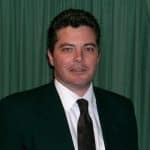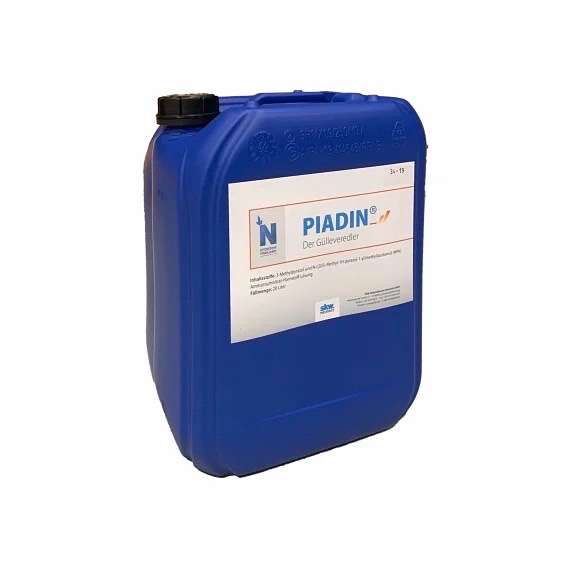Nitrification Inhibitors.
This is the first part of our blog on slow release fertilisers. This covers the use of nitrification inhibitors (NI) in turf. The second covers urease inhibitors (UI). Turf fertilizers that contain nitrogen inhibitors like DMPP and Didin, are also termed nitrogen stabilizers.
Nitrogen inhibitors such as these offer an alternative to slow release fertilisers like Sirflor 38.
- NI reduce emission of nitrous oxide (N2O) from the soil. This reduces leaching of soil nitrate (NO3–) out of the root zone.
- UI decrease ammonia (NH3) losses after urea hydrolysis.
Both NI and UI slow down N losses, and give turf more time to take up nitrogen. This means when you feed your turf these products give it the best chance to use the N that you apply.
What is Nitrification?
Nitrification is the action of microbes to convert ammonia to nitrate. It is an important step in the soil nitrogen cycle.
The nitrification rate depends on several factors. These include:
- Soil temperature.
- The presence or absence of soil oxygen.
- The soil moisture content.
- pH.
- The actual product that you use.
How do Nitrification Inhibitors Work?
Nitrification inhibitors (NI) like Didin, temporarily slow Nitrosomonas bacteria in the soil. These microbes convert ammonium N to nitrite. Nitrobacter, amongst other bacteria, then convert this nitrite to nitrate in the soil.
When soil temperatures are greater than 10°C, nitrification takes around two to four weeks, and as the soil temperature increases the rate of nitrification increases.
Nitrification inhibitors reduce nitrate leaching, keep nitrogen in the ammonia form longer, and increase nitrogen efficiency. However, if the turf canopy intercepts an inhibitor before it reaches the soil, there is a good chance that nitrification and denitrification will continue.
These need to reach the soil to work, and so placement is very important. 1Bell, M.J., Rees, R.M., Cloy, J.M., Topp, C.F.E., Bagnall, A. and Chadwick, D.R. (2015b) Nitrous oxide emissions from cattle excreta applied to a Scottish grassland: Effects of soil and climatic conditions and a nitrification inhibitor. Science of the Total Environment, 508, pp.343- 353. If this occurs then the use of these is a waste of time and money.
Temperature Effect on Nitrification
Nitrification is very temperature dependent, and slows to virtually nothing at soil temperatures below 10°C. Above 23°C, and the nitrification rate is at its maximum.
In fact, soil temperature is the major factor that influences how long NI’s work in the soil. For example, DCD and DMPP are not as efficient when you use these above a temperature of 16°C2Chen, D., Suter, H., Islam, A., Edis, R., Freney, J.R. and Walker, C.N. (2008). Prospects of improving efficiency of fertiliser nitrogen in Australian agriculture: a review of enhanced efficiency fertilisers. Australian Journal of Soil Research 46, 289-301..
Nitrification and Soil Oxygen.
Oxygen is needed for nitrification to occur. Once the water-filled pore space goes above 60% it has a negative impact on this process. After heavy rainfall the water filled pore space increases.
However, nitrification resumes once oxygen levels increase when free water drains from the soil profile. The entire process stops due to a lack of oxygen if a soil floods or becomes waterlogged. Ironically, a lack of water also has a negative impact on this entire process.
Nitrification is fastest in well-aerated soils, that are close to field capacity.
Inhibitors and Soil pH.
Turf can also take up nitrogen as ammonium. When turf does this it causes an increase in P uptake and of micronutrients such as Mn and Fe3Marschner H, 1995. Mineral Nutrition of Higher Plants. https://doi.org/10.1016/B978-0-12-473542-2.X5000-7.
As the soil pH increases, DCD and DMPP are less effective 4Guardia G, Marsden KA, Vallejo A, Jones DL and Chadwick DR. 2018. Determining the influence of environmental and edaphic factors on the fate of the nitrification inhibitors DCD and DMPP in soil. Science of the total environment, 624: 1202-1212..
Reduce Nitrogen Leaching.
Nitrate is much more mobile than ammonium in the soil. In soils low in clay and high in sand (modern-day sports turf constructions), NI’s reduce N leaching. 5Ferguson RB., Cahoon JE, Hergert GW, Peterson TA, Gotway CA, and Hartford AH. 1995. Managing spatial variability with furrow irrigation to increase nitrogen use efficiency. p. 443–464. In P.C. Robert et al. (ed.) Site-specific management for agricultural systems. ASA, CSSA, and SSSA, Madison, WI
Better Colour.
When you use NI’s on turf you tend to see it tends to take on a much darker green colour. There are two reasons for this:
- Turf has to take up the N as ammonium, which gives a dark green colour.
- The lower soil pH around the roots, means Iron and Manganese are more available for uptake.
What’s On The Market?
- Nitrapyrin is the most popular Nitrogen Inhibitor in agriculture. However, it is volatile and you need to place this into the soil. Nitrapyrin acts as a bactericide, and kills microbes in the soil. It persists in cold soils rather than warm soils, where it lasts 6-8 weeks.
- DCD or Didin lasts 25-55 days. After this it quickly moves out of the root zone after rainfall or irrigation. The rate of Didin is 2-10% of the total N content. It comprises 65% N, and adds to soil organic N.
- DCD is more mobile than DMPP because it is very soluble in water. In sandy soils and in high rainfall areas, DCD is likely to leach. It tends not to move in soils with high CEC and high organic matter levels.
- DMPP is in the Entec range. It is active for 25-70 days, does not move in the soil, but is less effective at high temperatures. DMPP claims to be 15-30x more efficient than DCD, and stays in the top 150 mm of the root zone. Inhibition occurs at rates of 0.5–1.5 kg/Ha, and it reduces nitrate leaching without moving itself.
- Piadin is another Nitrogen inhibitor and is a liquid mixture of 1H-1,2,4-triazole and 3-MP. You can use this in several ways. As a pre or post fertiliser spray to a turf surface or alternatively, you can add this to a spray tank. This then turns a urea or ammonium based straight fertiliser into an inhibited fertiliser. This high flexibility means that you are not tied to prefomulated products that contain an NI.
- Alzon Neo-N contains an NI and a urease inhibitor and so has a dual mode of action.
What Nitrification Inhibitor works best?
- Ni’s give the best results on sandy or poorly drained soils. These suffer from the highest N losses.
- In heavier soils, like push up greens, Didin is the best option.
- In sandy greens or sports grounds, DMPP and Piadin work best6Guo Y, Naeem A and Mühling KH. 2021. Comparative Effectiveness of Four Nitrification Inhibitors for Mitigating Carbon Dioxide and Nitrous Oxide Emissions from Three Different Textured Soils. Nitrogen 2021, 2(2), 155-166; https://doi.org/10.3390/nitrogen2020011.
Examples of Inhibitors | ||
Common Name | Chemical Name | Activity |
DCD, Didin | Dicyandiamide | Nitrification Inhibitor |
DMPP, Entec | 3,4-dimethylpyrazole phosphate | Nitrification Inhibitor |
Nitrapyrin, N-Serve | 2-chloro-6-(trichloromethyl)-pyridine | Nitrification Inhibitor |
DMPSA | 2-(3,4-dimethyl-1H-pyrazol-1-yl) succinic acid isomeric mixture | Nitrification Inhibitor |
NPPT | N-(2-Nitrophenyl) phosphoric triamide | Urease Inhibitor |
NBPT, NBPT, nBTPT, or Agrotain | N-(n-butyl) thiophosphoric triamide | Urease Inhibitor |
PPD, PPDA | phenyl phosphorodiamidate | Urease Inhibitor |
References

Jerry Spencer
Jerry has an Hons Degree in Soil Science (1988) from Newcastle Upon Tyne University. He then worked as a turf agronomist for the Sports Turf Research Institute (STRI) until 1993.
He gained a Grad Dip in Business Management from UTS in 1999. He has held a number of technical roles for companies such as Arthur Yates (Commercial Technical Manager) and Paton Fertilizers (Organic, turf specialty and controlled release fertiliser) portfolios.
In 2013 he established Gilba Solutions as independent sports turf consultants and turf agronomists. Jerry has written over 100 articles and two books on a wide range of topics such as Turf Pesticides and turfgrass Nutrition which have been published in Australia and overseas.


